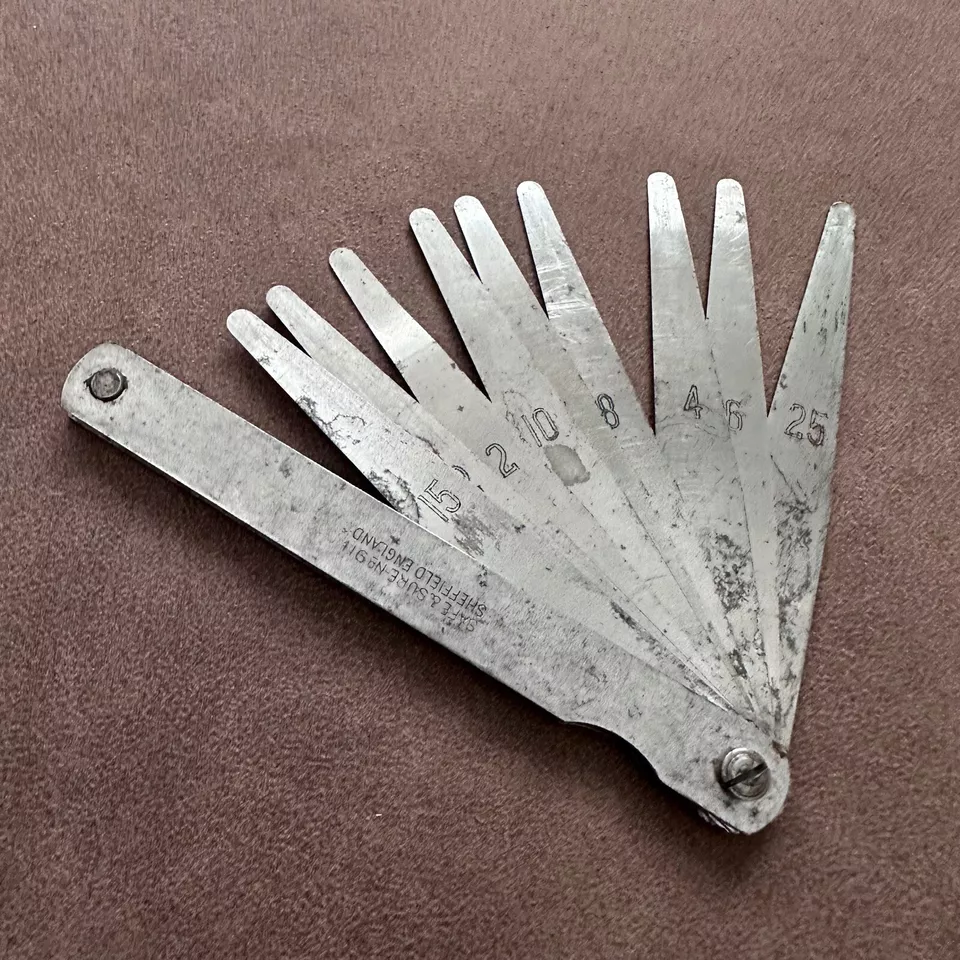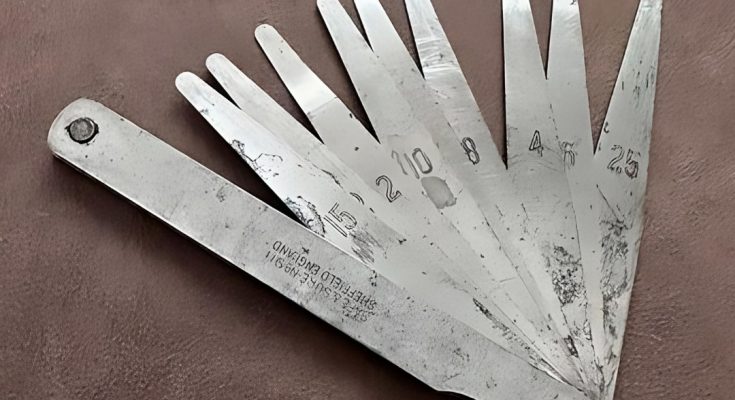The feeler gauge tool, an essential asset in mechanical and engineering arenas, boasts a rich history dating back to the early 20th century. As the industrial age ushered in a demand for precision measurement, the feeler gauge emerged as a pivotal innovation. It enabled the accurate assessment of gaps and clearances between mechanical components, marking a significant advancement.
This ingenious tool has been crucial in the maintenance and assembly of machinery, ensuring that all parts fit with exact precision. Its profound impact on the mechanical and engineering sectors is undeniable and has stood the test of time.

This adaptable tool is a staple in the toolkits of numerous professionals, from automotive technicians to aerospace engineers. Its enduring relevance underscores the brilliance of its initial design and the perpetual need for precise measurement in machinery and manufacturing. Even as technology evolves, the feeler gauge remains a dependable and vital instrument in the quest for excellence and innovation in these dynamic fields.
Usage of the Feeler Gauge Tool
Precision Measurement
Feeler gauges comprise sets of thin metal blades, each with a distinct thickness, calibrated for measuring small gaps. These tools are indispensable in various sectors:
- Automotive Industry: Mechanics use feeler gauges to set spark plug gaps, adjust valve clearances, and measure gaps between engine parts.
- Manufacturing: Feeler gauges ensure that machine parts fit together precisely, maintaining overall product quality and operational efficiency.
- Engineering: Engineers rely on feeler gauges for design and maintenance tasks, verifying the accuracy of assembled machinery and components.
Versatility and Ease of Use
The straightforward design of the feeler gauge makes it highly versatile and user-friendly. By selecting a blade of the appropriate thickness and inserting it into a gap, users can quickly and precisely measure clearances. This simplicity and reliability make the feeler gauge a preferred tool in many precision-dependent industries.
Legacy of the Vintage Feeler Gauge Tool
Influence on Modern Tools
The vintage feeler gauge’s legacy lives on in modern precision measurement instruments. While digital and electronic gauges are more common today, the essential method of measuring gaps using thin blades remains unchanged. The influence of the feeler gauge is evident in contemporary tools designed to provide the same level of reliability and accuracy.
Collector’s Item
Today, vintage feeler gauges are coveted by collectors and enthusiasts of antique tools. They are prized for their craftsmanship, durability, and historical significance. Collectors often seek well-preserved sets, admiring the ingenuity and practicality of early 20th-century engineering.
Educational Tool
Vintage feeler gauges also serve an educational purpose, offering insights into the evolution of precision measurement. They are used in technical schools and training programs to teach students about the basics of mechanical measurement and the critical importance of accuracy in engineering.
The vintage feeler gauge tool has been instrumental in the history of precision measurement. Its application in various industries, from automotive to manufacturing, has ensured the meticulous assembly and upkeep of machinery. Today, it continues to inspire modern tools and is cherished by collectors and educators alike. The feeler gauge’s legacy underscores the lasting value of precision and the significant impact of simple yet effective engineering solutions.



